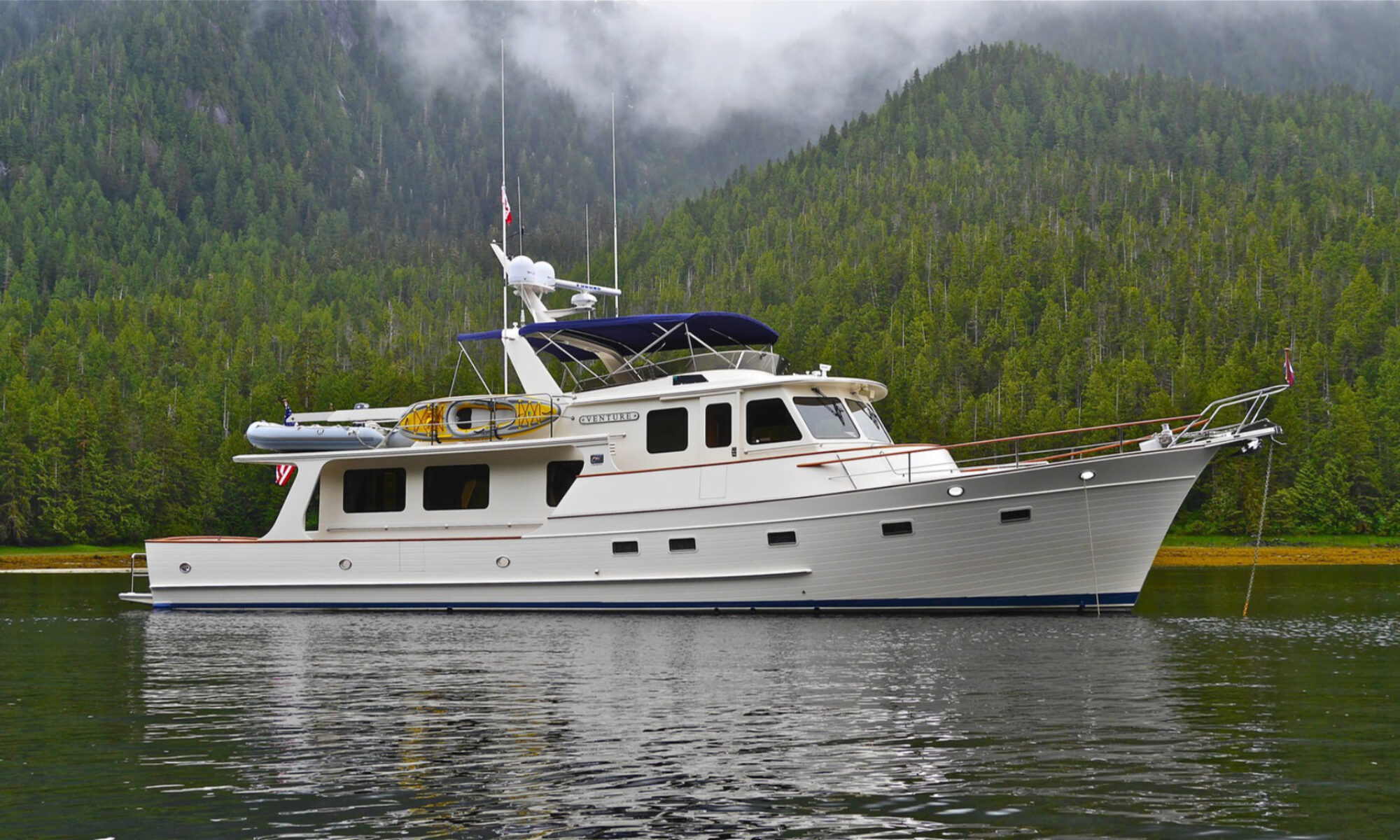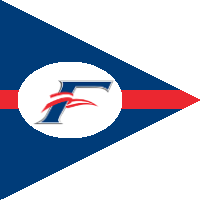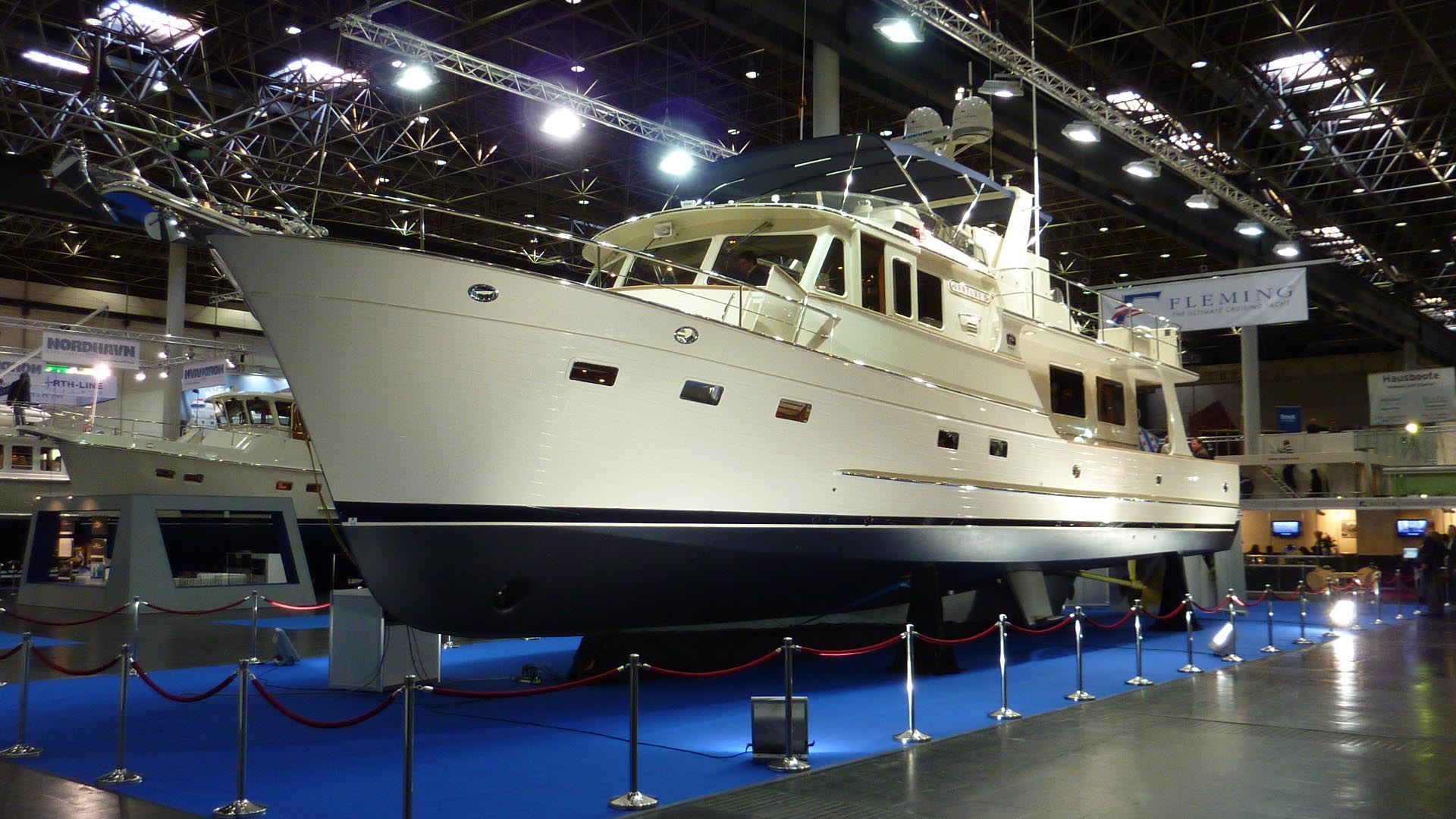
In Boat Shows around the world, enthusiastic crowds admire the parade of boats glistening in all their splendor. Seldom is any thought spared for the ingenuity – and, sometimes drama, needed to get them to where they are. Here are a few more stories at which I was present and which concerned our Fleming brand.
The First Fleming
When the first Fleming arrived from Taiwan, it did not immediately go into a boat show but its offload and delivery from the port of Long Beach to Newport Beach was still fraught with anxiety and worth the telling.
Until this boat arrived in the US, no Fleming had ever been in the water! The yard at that time did not have a test tank and, with Taiwan still under martial law, sea testing was difficult and extremely expensive. Special permits had to be obtained and soldiers with big boots and serious weapons were required to be on board.
Waiting on the dock in Long Beach was my partner, Anton; Larry Drake the naval architect; the dealer, Chuck Hovey – who had risked his reputation to support us; and the actual buyers of the boat. No pressure!
I had learnt from experience that boats built in the orient tended to come out heavier than designed and this especially applied to the first boat. I had tipped the scales in my favor by raising the boot stripe slightly and by doing so more at the bow than the stern because a boat appearing down by the stern was more acceptable than one down by the bow.
The very first Fleming was launched alongside the ship and floated to her lines. It was then we discovered that the batteries were all completely flat. I had left Taiwan to come to the US after the boat had reached Kaohsiung docks but before it had been loaded aboard the ship. I had left instructions that all batteries were to be disconnected but this had not been done and something had been left switched on. Flat batteries meant that the boat was dead in the water. She was moved alongside the dock where the water was unpleasantly rough due to the wake of passing tugs. We used the battery of a dockside crane to jump-start the generator to charge the main engine batteries. We ran the genset all day but after six hours all we got was a click from the starter solenoid. We decided to buy a new 8D battery and lowered it on ropes 20ft down to the pitching boat. We maneuvered it into the engine room and – presto – we had the engines running.
The boat had been shipped with insufficient fuel to make the 40-mile, open-water transit to Newport Beach. It was after 5 o’clock when we headed to the first fuel dock. It was closed. We moved to a second – also closed. As we approached the third, the attendant was walking away down the dock. Alerted by our frantic shouts, he said he could provide fuel but the office was closed and it could be cash only. We emptied our pockets and came up with a modest amount – but it was just enough.
It was beginning to get dark but none of us had eaten all day and were beginning to wilt. We tied up the boat and found an unpretentious restaurant that served good food – paid by credit card. Finally, we were ready to head out into the black night and face the open Pacific Ocean in our brand-new, untested, boat. We had not gone far before an engine alarm sounded. Panic! It turned out that Larry, who was at the helm, had pressed down on the engine instrument panel and one of the instrument connections had touched a pipe fitting on top of the steering pump. Apart from this and the general anxiety about the trip we reached Newport Beach without further incident at about 2 AM. It had been a long and stressful 20-hour day.
The First Fleming 65
We move now to the first Fleming 65. My personal boat named Venture. The first boat show in which she appeared was in Seattle in 2005. There was no special drama as she was already in the area and had been cruising all summer following her arrival in the US in January of the same year.
During the summer of 2006, we cruised in Alaska – as far north as Juneau. In 2007, we took her from Vancouver down to the Sea of Cortez in Mexico. In 2008 we took her to the Galapagos Islands and through the Panama Canal to the US East Coast. We visited New York, the Great Lakes, the St Lawrence Seaway, Prince Edward Island, Nova Scotia and back to Annapolis in Maryland. Within one week of completing this 8,000 nm journey, Venture was on display in a boat show at Trawlerfest in Solomons. There can be few boats put on display so soon after completing such a voyage.
Venture II – also a Fleming 65 – did her cruising in European waters. During her first summer in 2009, we cruised along the South Coast of England before participating in the Southampton International Boat Show. She then continued across the predictably nasty North Sea where we were intercepted by the Dutch Coastguard on the grounds of having illegally taken the inshore navigation channel reserved for boats under 20 meters in length. Actually, Venture is just under 20 meters but, unknown to us, our new AIS was broadcasting our length as 25 meters. The coastguard crew were very nice and very professional and, after handshakes all around, we were soon on our way and heading up the Elbe River to attend another boat show in Hamburg.

From there we took her back into the North Sea then up the Ijssel and busy Rhine Rivers to Dusseldorf. Located in the middle of Europe many miles from the sea, Dusseldorf is one of the most inconvenient places for an exhibitor to display his boat. Boats too large to be trailered have to travel many miles inland up the busy Rhine River. Given its vital importance as a commercial waterway, all vessels are required to have a qualified Rhine pilot on board. So, in mid-winter, we traveled up the Rhine sharing the waterway with scores of huge barges. 50% of inland freight in Europe travels by barge.
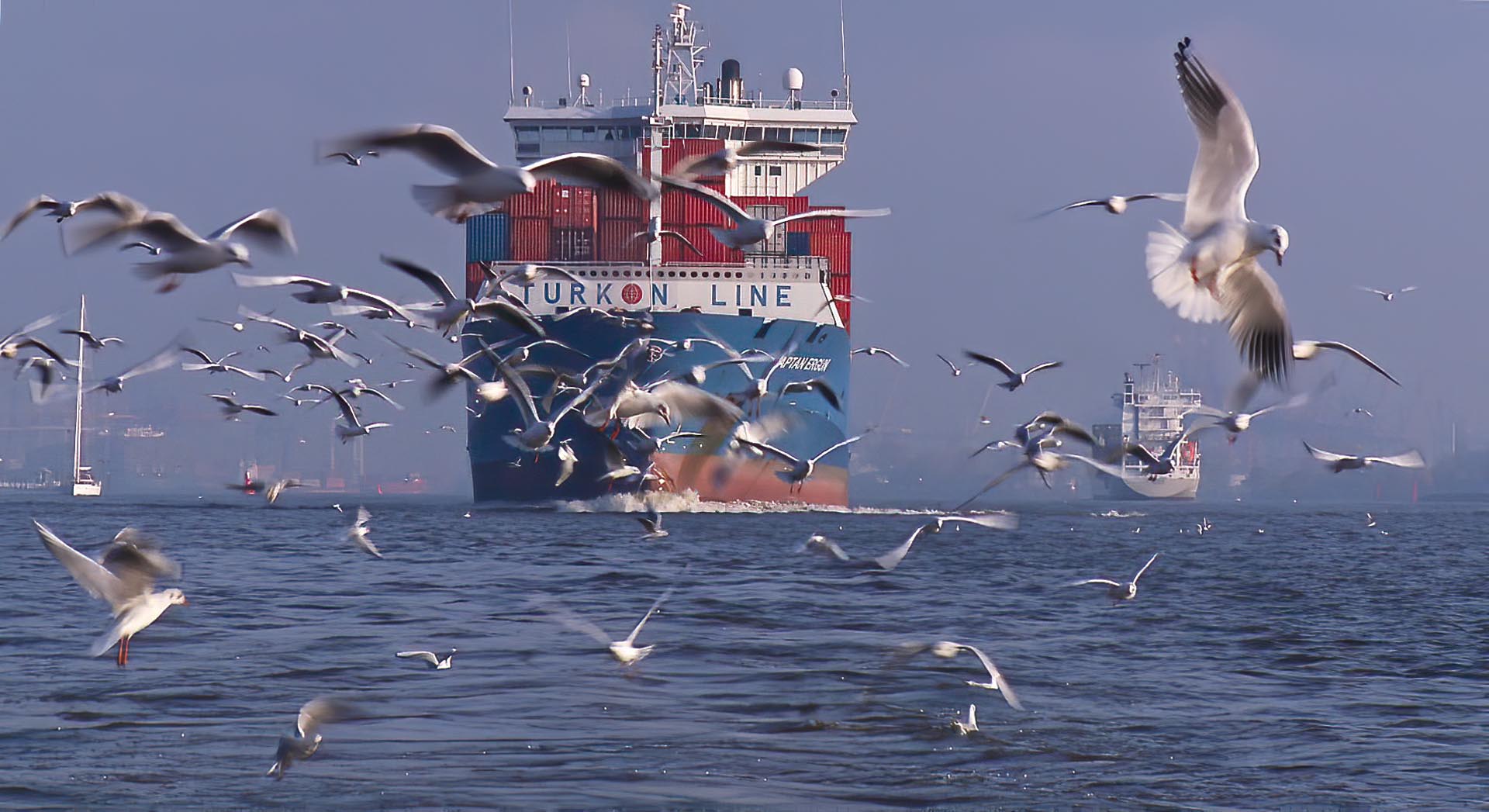

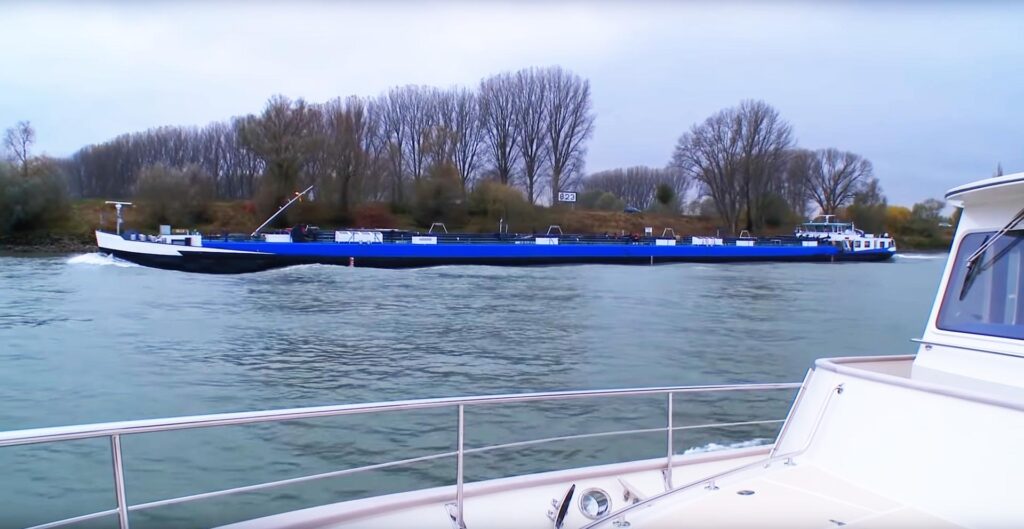
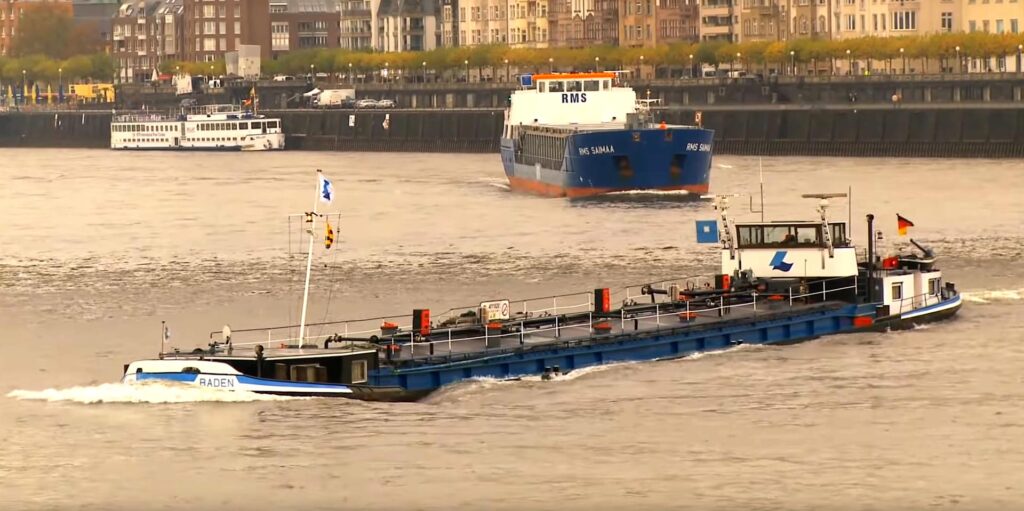
At Dusseldorf, a conventional travel lift cannot be used to lift the boats in and out of the river because the current runs parallel to the banks at a brisk 6 knots. Instead, an ingenious device, named Big Willi, is used to retrieve and launch boats lined up parallel to the shore whose legs can be individually adjusted for length.
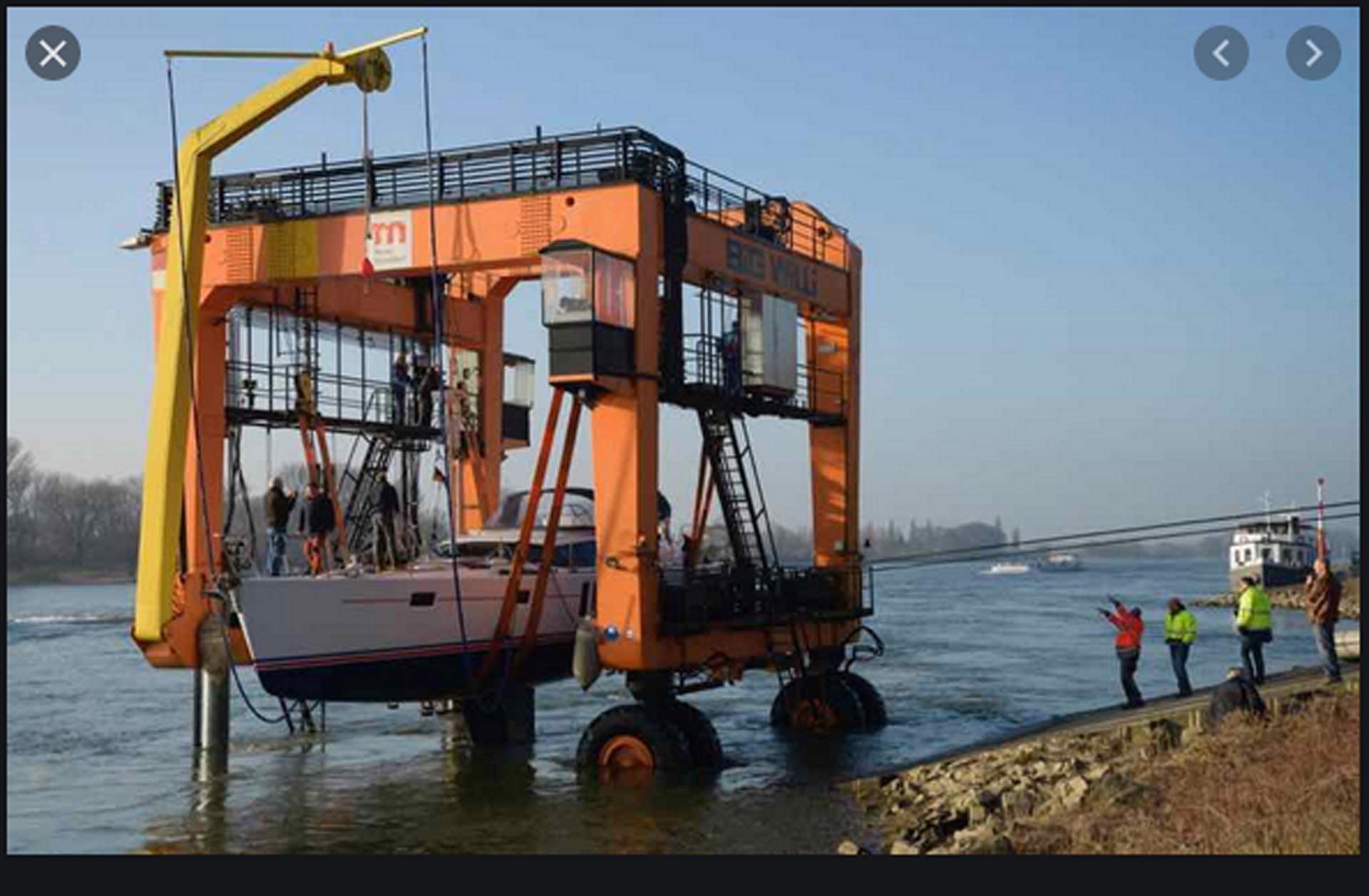
Despite its inconvenient, dry land, location, the Dusseldorf show is the largest in the world and celebrated its 50th anniversary in 2019 with 1900 exhibitors and 250,000 visitors from 90 countries. The show has 19 pavilions including some big enough to house a fully rigged 75 ft sailboat or a pool large enough for active windsurfers – with bleachers for spectators and fans providing the wind.
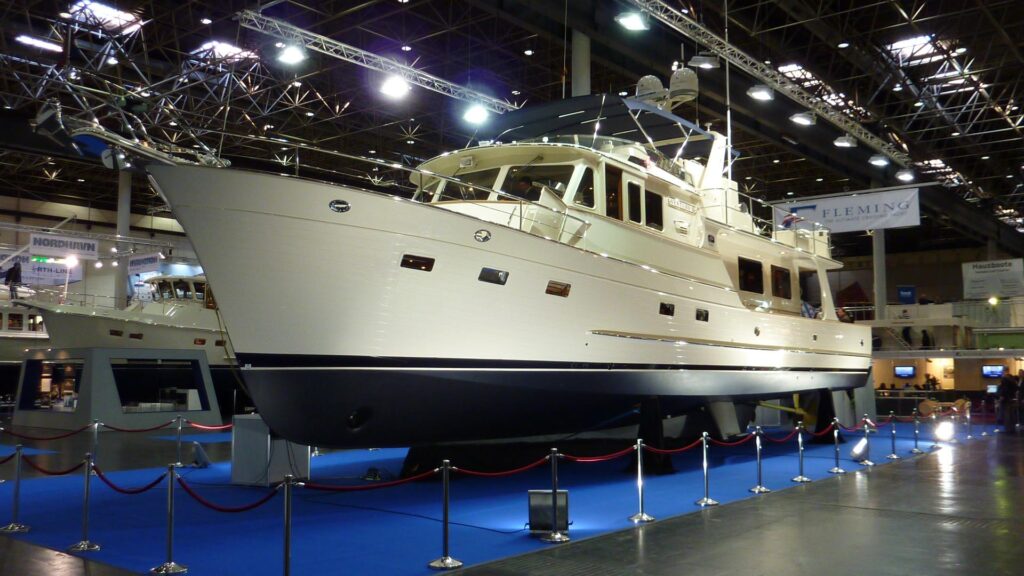
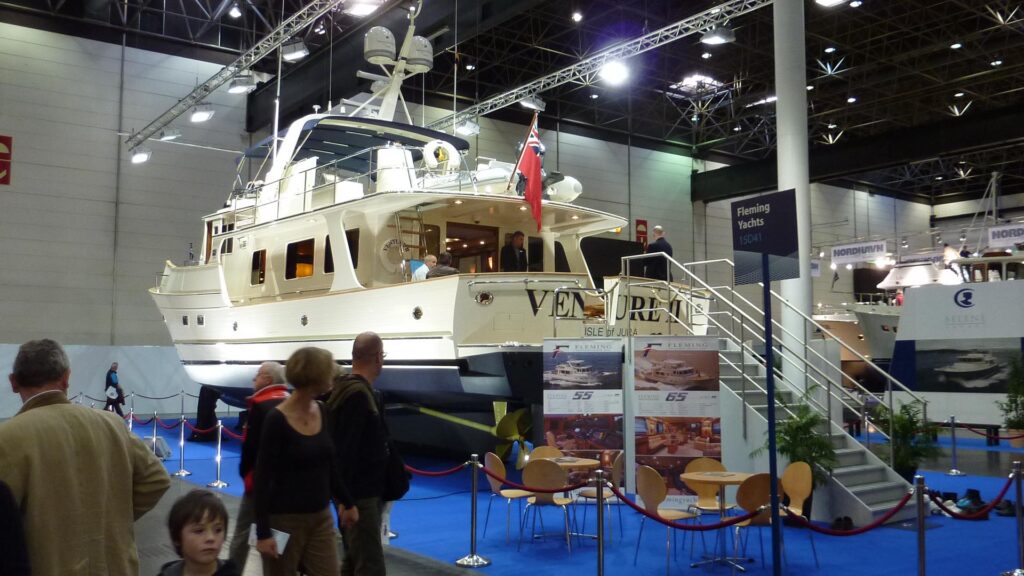
Looking around me I could not help reflecting that Venture II was here with the best the world could offer and, unlike the others, our office was over my garage. I also recalled that, even before we had a boat in Europe, the Fleming 65 had been voted best in the world in her class at the Cannes Boat Show in 2006. My daughter, Nicky, and I attended the awards ceremony in that city.
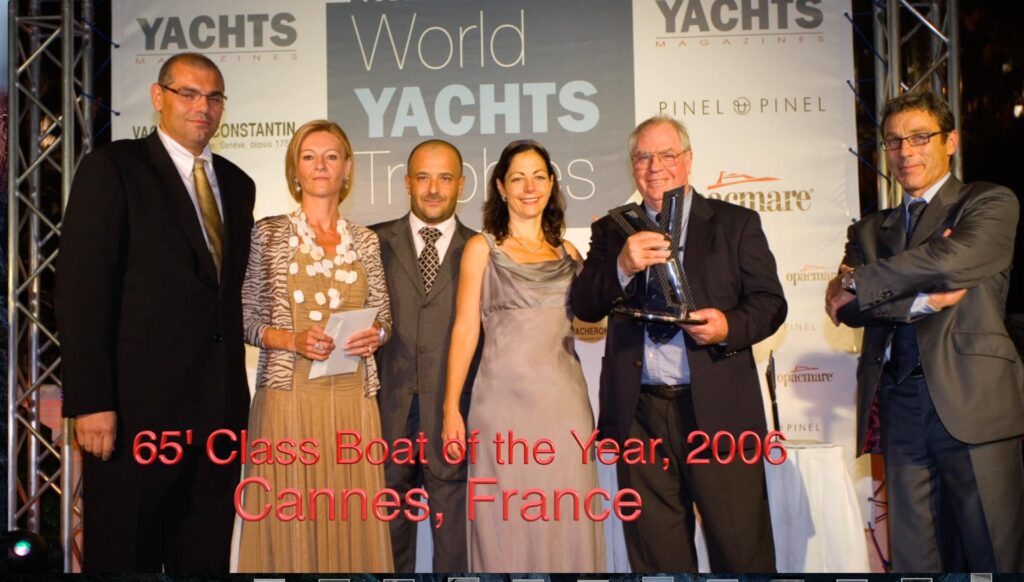
The following year, 2010, Venture II took us to Ireland, Scotland, the Faroe Islands, and a circumnavigation of Iceland before returning to Southampton. In Scotland, we called at the Hebridean Island of Jura where we anchored in the bay off the isolated croft that had once been the home in which my great-grandfather had spent his childhood.

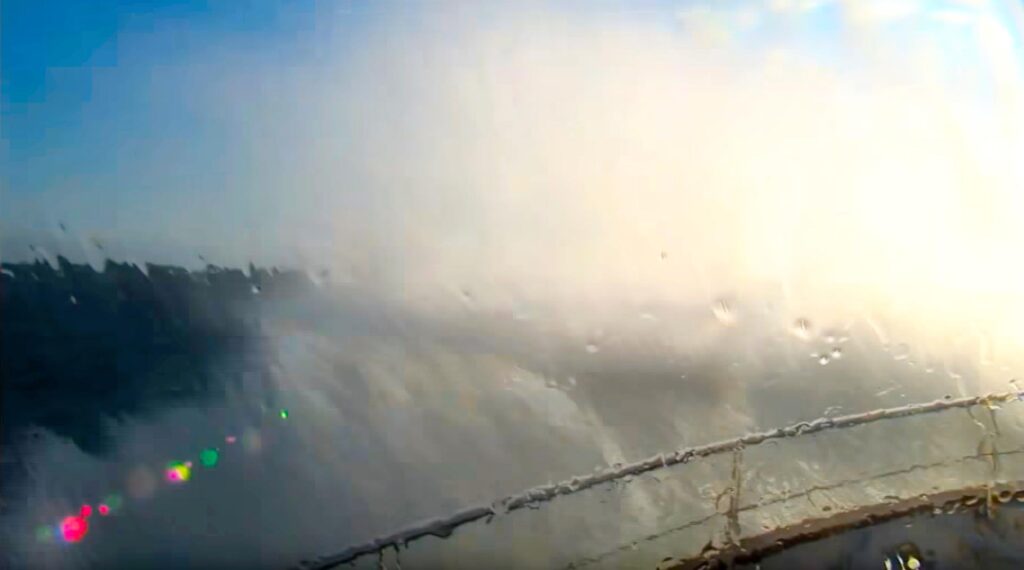
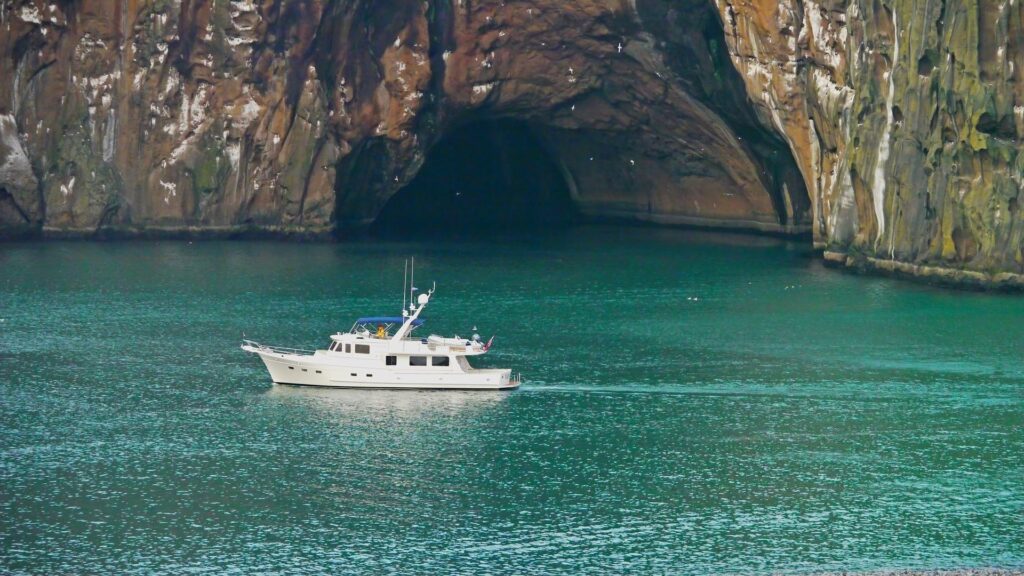
Just seven days after her arrival back in Southampton at the end of this extensive journey through the North Atlantic, Venture II was once again on display at the Southampton International Boat Show.
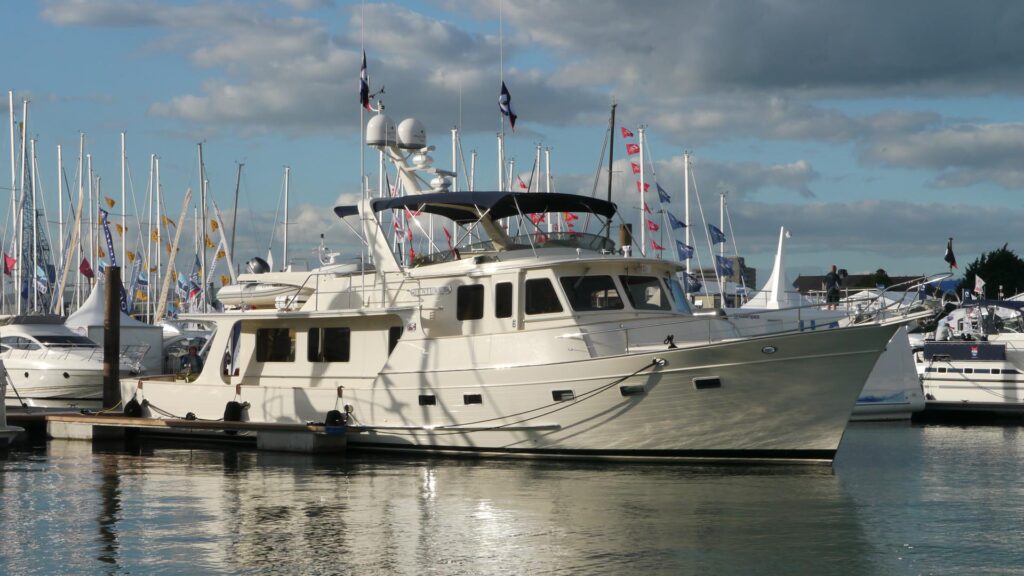
Some friendly coppers stopped by and one shared his helmet with Louisa from Taiwan.
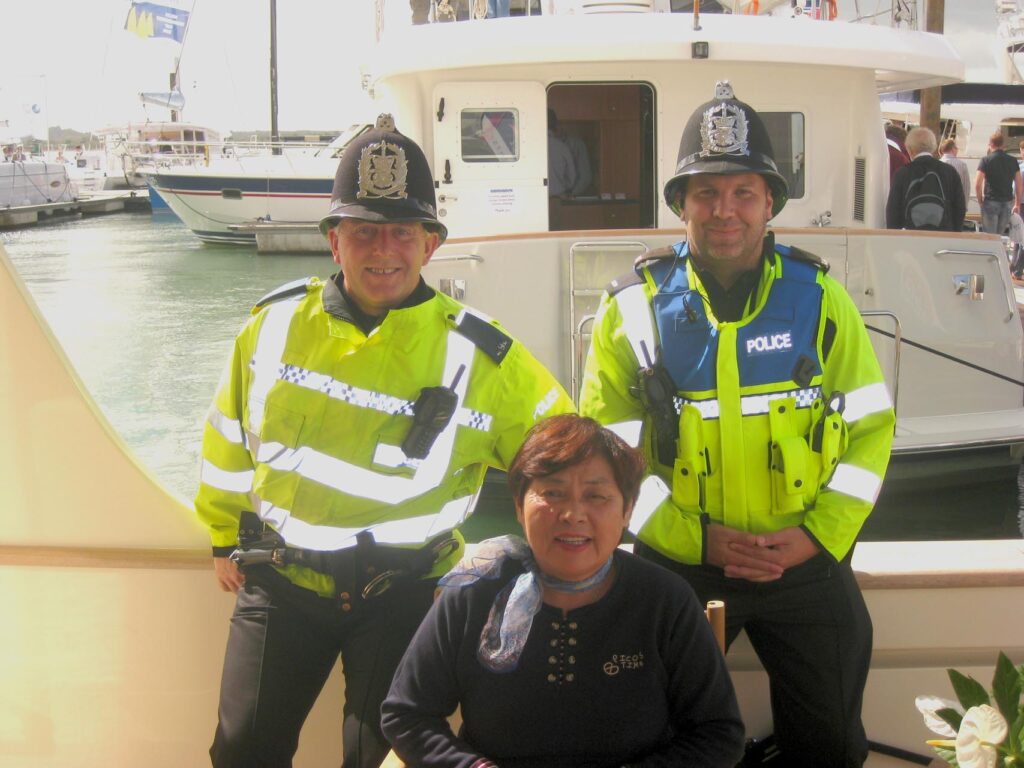
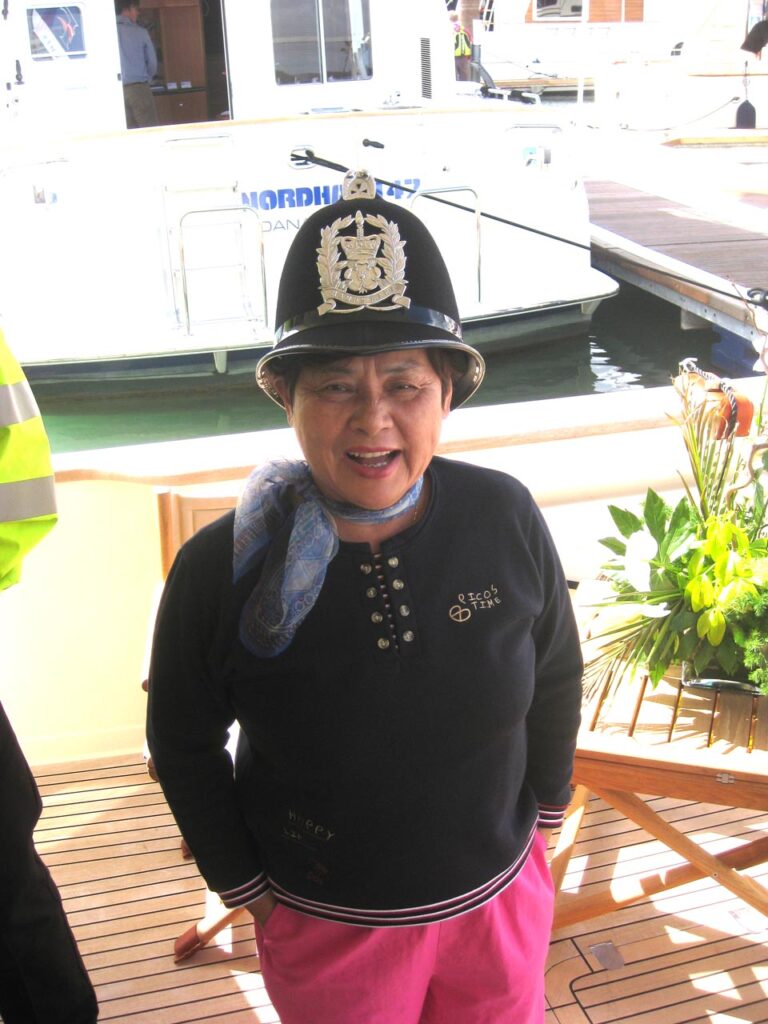
When next you visit a boat show, keep in mind that some of those boats on display may have a story to tell – especially if it’s a Fleming!
If you missed Part 1, you can read it here
